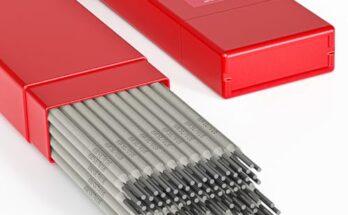Welding hardened steel to mild steel is a task that requires careful planning and precise execution. If you’ve ever worked with different types of metal, you know that they don’t always behave the same way under heat. Hardened steel is strong but brittle, while mild steel is more flexible.

Image by reddit
So, joining these two requires special techniques to prevent cracking, weakening, or structural failure. I’ve personally tackled this challenge many times, and through trial and error, I’ve learned the best methods to get a solid, long-lasting weld.
Differences Between Hardened Steel and Mild Steel
Before welding these two materials, it’s important to understand their unique properties:
| Property | Hardened Steel | Mild Steel |
|---|---|---|
| Strength | Very High | Moderate |
| Brittleness | High | Low |
| Weldability | Difficult | Easy |
| Heat Sensitivity | Very Sensitive | Less Sensitive |
Hardened steel is made tough through heat treatment, which increases its strength but also makes it more prone to cracking under stress. Mild steel, on the other hand, is softer and easier to work with. The trick to welding them together is to manage the heat input and select the right filler material.
Choosing the Right Filler Metal
The filler metal acts as the bridge between hardened steel and mild steel. If you choose the wrong one, the weld can be weak, brittle, or even fail completely. Based on my experience, the best fillers for this job are:
- E309 stainless steel rod – Works well as it resists cracking and maintains strength.
- Nickel-based filler – Provides ductility and reduces brittleness.
- Low-hydrogen electrodes – Prevents hydrogen-induced cracking.
Preheating: Why It’s Essential
Hardened steel can crack if it’s welded cold. That’s why preheating is crucial. Heating the metal before welding slows down the cooling process, which prevents sudden contraction and cracking. Here’s a basic guideline for preheating temperatures:
- Mild steel: No preheating required in most cases.
- Hardened steel: Preheat to 300-600°F depending on the thickness and hardness.
I always use an infrared thermometer to check the temperature before starting.
Best Welding Techniques for This Job
To weld hardened steel to mild steel effectively, the right technique matters. Here are the best methods I’ve used:
MIG Welding
MIG welding is one of the easiest ways to join these metals, but it requires the right wire and gas. I use a stainless steel wire like ER309L and shield it with a 75% Argon / 25% CO2 mix. This combination provides a strong, clean weld while reducing brittleness.
TIG Welding
TIG welding gives better control over the heat input, making it a great choice for welding hardened steel to mild steel. Using a nickel-based filler helps balance the different expansion rates of the metals, preventing stress fractures.
Stick Welding (SMAW)
Stick welding is a solid option if you don’t have access to MIG or TIG welders. I recommend using E7018 or E11018 rods, as they offer good strength and ductility. Keeping a steady hand and slow cooling is essential.
Managing Heat Input and Cooling
Hardened steel is sensitive to heat, so excessive heat input can cause it to lose its hardness or develop cracks. Here’s how to control it:
- Use short welding passes – Reduces excessive heating in one spot.
- Allow time between passes – Prevents overheating.
- Use a controlled cooling process – If needed, wrap the weld in an insulating blanket to slow down cooling.
Post-Weld Heat Treatment
Depending on the hardness of the steel, post-weld heat treatment (PWHT) might be necessary. This process helps relieve stress in the weld area and prevents future cracking. I usually recommend tempering at 400-600°F for an hour if the hardened steel was highly heat-treated before welding.
Common Mistakes and How to Avoid Them
Over time, I’ve seen and made several mistakes while welding hardened steel to mild steel. Here are the most common ones and how to avoid them:
- Skipping preheat → Leads to cracks in hardened steel. Always preheat properly.
- Using the wrong filler metal → Can result in a weak weld. Choose nickel-based or stainless-steel fillers.
- Welding too fast → Causes internal stress. Take your time and let the metal adjust.
- Rapid cooling → Can make hardened steel more brittle. Use slow cooling techniques.
Conclusion
Welding hardened steel to mild steel isn’t the easiest task, but with the right preparation, filler material, and heat control, you can create a strong and lasting weld.
I’ve learned that taking the time to preheat, selecting the right welding process, and ensuring slow cooling makes all the difference. If you ever find yourself struggling with this type of welding, just remember—patience and the right technique are key.
Frequently Asked Questions
Can you weld hardened steel without preheating?
No, preheating is necessary to prevent cracks and stress fractures in the weld area.
What is the best welding method for hardened steel to mild steel?
TIG welding with a nickel-based filler or MIG welding with stainless steel wire works best.
Can hardened steel be welded with a regular MIG wire?
No, a specialized wire like ER309L stainless steel is recommended for best results.
Does welding hardened steel weaken it?
Yes, welding can alter the heat treatment of hardened steel. Proper cooling and post-weld heat treatment can help restore its properties.
How do you prevent cracks when welding hardened steel?
Preheat the material, use the right filler, control heat input, and ensure slow cooling.


